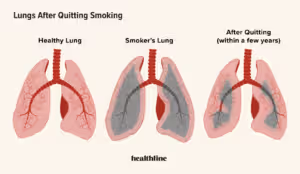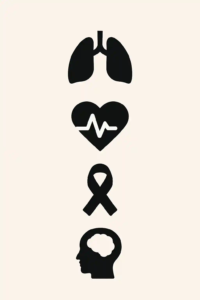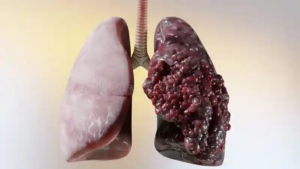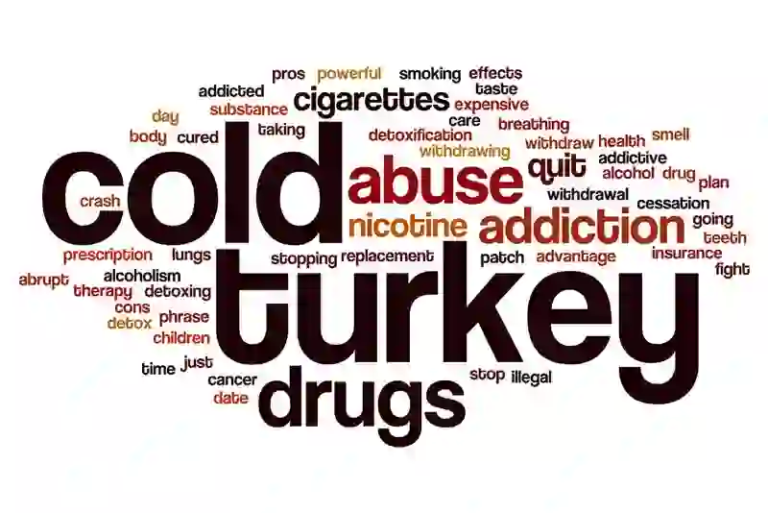 Quitting smoking is often described as one of the most important steps a person can take toward protecting their health. When a person lights the last cigarette, a remarkable journey begins: over minutes, hours, days, weeks, months, and years, the body slowly reverses damage once caused by tobacco and nicotine. Understanding the risks, withdrawal symptoms, health benefits, and how to build a solid quit plan including the vital support and medical advice can make all the difference. This article explains how smoking affects organs like lungs and heart, how cessation triggers recovery, and why joining support groups or consulting a healthcare provider can help manage cravings and increase success.
Quitting smoking is often described as one of the most important steps a person can take toward protecting their health. When a person lights the last cigarette, a remarkable journey begins: over minutes, hours, days, weeks, months, and years, the body slowly reverses damage once caused by tobacco and nicotine. Understanding the risks, withdrawal symptoms, health benefits, and how to build a solid quit plan including the vital support and medical advice can make all the difference. This article explains how smoking affects organs like lungs and heart, how cessation triggers recovery, and why joining support groups or consulting a healthcare provider can help manage cravings and increase success.
The Heart of the Risk: Immediate Changes in Minutes to Hours
Within minutes of the last cigarette, significant changes occur in your body. Carbon monoxide the harmful gas from tobacco smoke begins to decline, allowing oxygen levels in the blood to rise. Blood pressure and heart rate drop toward healthier levels. These early shifts reduce stress on vital organs and begin reversing the risk for heart disease, coronary heart disease, heart attack, and stroke.
By the first hour after quitting, blood flow to your extremities improves. Oxygen delivery is more efficient, and the burden on your circulation decreases slightly. These changes may seem subtle, but for many people, they mark the first step in recovery from the dangerous effects of smoking.
The First Day: Cessation Begins and Withdrawal Symptoms Appear
Within the first day (24 hours), your body begins to face nicotine withdrawal. Cravings for a cigarette often begin within hours, and withdrawal symptoms such as irritability, anxiety, coughing, or difficulty concentrating can surface. That’s because nicotine addiction affects brain chemistry: receptors adapted to daily nicotine dosing are suddenly deprived, and in response, the brain signals you to smoke again.
Although this period is challenging, it’s also the point where health benefits start. Every cigarette you don't smoke reduces exposure to carbon monoxide, blood pressure starts to normalize, and your lung function begins modest improvement. You may feel uncomfortable, but the body is working to restore itself.
Days and Weeks: Body Regrowth and Health Improvements
Within a Few Days
By day two, taste and smell often begin to return. Cilia (tiny hair-like structures in the bronchial tubes) that help clear mucus and germs start to recover. The chances of experiencing a respiratory illness begin to decline. Carbon monoxide clears more, and oxygen levels improve further, aiding overall energy levels and mental clarity.
In this early phase, cravings strike strongly. Nicotine withdrawal can produce headaches, fatigue, and a sense of restlessness. It’s helpful to lean on a support strategy: whether that means nicotine-replacement products, joining a support group, or seeking guidance from a healthcare provider.
After a Few Days
Within three to four days, nicotine is essentially out of your system. Withdrawal symptoms may peak and then begin to decrease in intensity. You might experience frustration or difficulty sleeping, but your body continues healing: coughing may increase as accumulated mucus is expelled, reflecting recovering lung function.
At the same time, your blood pressure and heart rate become more stable. This shift lowers the risk of heart attack, coronary heart disease, and stroke over time.
After a Few Weeks
By the first week to a few weeks in, lung function can increase by up to 30%, improving breathing and endurance. Circulation continues to improve, enhancing energy levels and reducing the risk to blood vessels. Many people report less shortness of breath and greater physical capacity.
Within weeks, the dangers of smoking begin to recede. Your body is clearing out toxins, and overall health takes a noticeable turn for the better. If quitting cold turkey or using methods such as nicotine replacement therapy or nicotine‑replacement products, a structured approach helps manage addiction to nicotine and cravings.
Months and Years: Deep Recovery and Long-Term Benefits
After a Few Months
After several months, lung tissue continues recovering. The airways bronchial tubes become less inflamed, and you cough or wheeze less frequently. Respiratory illnesses such as bronchitis and chronic lung diseases, including chronic obstructive pulmonary disease (COPD), occur less often. Physical activities such as walking or climbing stairs become easier.
The risk of heart disease decreases significantly. Your blood vessels regain flexibility, and blood pressure stabilizes further. Coronary heart disease risk continues to drop, and overall risk of a heart attack lessens.
One Year: Major Turning Point
At one year after quitting smoking, the risk of heart disease (including coronary heart disease and heart attack) is about half that of a current smoker. The components of cigarette smoke, such as carbon monoxide and nicotine, are no longer imposing constant strain on your heart, blood, and lungs. Your circulation improves, blood pressure remains healthier long term, and your oxygen transport capacity stabilizes. Many people find their overall health and energy levels greatly improved simple tasks like breathing deeply, coughing less, and walking farther become easier.
After Several Years: Long-Term Health Gains
At five years, stroke risk begins approaching that of non-smokers. Risk of cancers, including lung cancer, cervical cancer, and other smoking-related diseases, declines substantially. The rate of cancer screening positivity may be lower, and your immune system regains strength.
By ten years, risk of lung cancer drops to about half of someone who smokes, and overall mortality related to serious health risks like chronic lung diseases, cancer, and heart attack continues to diminish. Effects on pulmonary disease and COPD become less likely, especially if smoking cessation occurred many years earlier.
Over many years, overall life expectancy improves, and quality of life tends to be much higher than it would have been with continued smoking.
Understanding Symptoms and Withdrawal: Navigating Cessation
Nicotine Withdrawal and Cravings
During smoking cessation, withdrawal symptoms including cravings, headaches, irritability, insomnia, increased appetite, and mood swings are common. These can vary in intensity depending on whether someone quits cold turkey or uses nicotine replacement therapy. Some may experience elevated blood pressure temporarily due to stress; others might feel fatigue or lack of concentration.
Coping Strategies
A strong quit plan is critical. This may include setting a clear first step, such as a quit date, using nicotine-replacement products or nicotine replacement therapy, seeking support from support groups or counseling, and consulting a healthcare provider or medical advice. Behavioral techniques and social support reduce addiction to nicotine and cravings, and help address the root cause of smoking, whether stress, social triggers, or habit.
Role of Nicotine Replacement Therapies
Nicotine replacement therapies such as gum, patches, lozenges, or inhalers help ease nicotine withdrawals by giving controlled doses while avoiding harmful smoke chemicals like carbon monoxide. This strategy aids in gradually reducing dependence, while reducing intense withdrawal symptoms and minimizing relapse risk.
Support Systems and Long-Term Success
Using support groups either in person or online or engaging with a healthcare provider increases chances of quitting successfully. Programs such as smoking cessation programs, counseling, or peer communities help a person stay motivated and cope with slips. Role models and shared experiences show that quitting is possible, and reinforce good habits.
Health Benefits: What You Gain As You Stop Smoking
 Protected Lungs and Respiratory Health
Protected Lungs and Respiratory Health
When you quit, mucus clearing improves as cilia recover. You cough less, bronchial tubes open up, and lung airways gradually heal. This reduces the chance of bronchitis, pulmonary disease, and COPD. Over time, lung function may reach near-normal levels, especially if a person quits early in life.
Reduced Heart and Blood Risks
Your risk of heart attack, coronary heart disease, and high blood pressure decreases significantly. Blood vessels regain elasticity, improving circulation, reducing pressure, and enhancing oxygen-rich blood delivery. This leads to lower risk of stroke, heart-related events, and chronic cardiovascular disease.
Lower Cancer Risks
Smoking is a well-known cause of many cancers, especially lung cancer and cervical cancer. After quitting, risk of these cancers gradually falls. It also reduces risk of other smoking-related diseases such as cancers in mouth, throat, and bladder.
Better Mental Health and Energy
As oxygen levels stabilize and carbon monoxide clears, you feel sharper, less fatigued, and more energized. Many people report improved mood, better sleep, and enhanced mental clarity.
These overall health improvements enrich quality of life, extend lifespan, and protect against long-term dangers of smoking. The combination of respiratory, cardiovascular, and cancer-related benefits underscores why quitting is a powerful decision.
Why Our System Makes a Difference: Introducing Extreme Anti-Smoking System
Our quit smoking system extremeantismokingsystem.com combines evidence-based guidance, medical advice, and support tailored to each person. The system uses a structured quit plan, monitoring of oxygen levels and carbon monoxide, and interactive coaching. We incorporate best practices, including nicotine replacement therapy, behavioral interventions, and access to support groups.
From the first day, users track their withdrawal symptoms, manage cravings, and observe improvements in lung function and heart rate. Over the first week, the system encourages habits to avoid relapse, and over weeks to months, it supports rebuilding healthy routines. Long-term, after months and years, the system helps the person maintain cessation, reduce serious health risks, and enjoy the health benefits of life without smoking.
Supporting Real People: Experience and Expertise
Our team includes health coaches and consultants who understand the root cause of addiction to nicotine, developed in partnership with healthcare professionals and inspired by reputable public health entities. Though we’re not a medical provider, we offer resources to consult a healthcare provider, discuss nicotine replacement therapies, and join medical advice sessions. Our system emphasizes EEAT standards—ensuring information is accurate, trustworthy, and grounded in professional expertise.
Managing Specific Health Risks After Quitting
Heart and Circulatory Risks
Within months and years, your heart disease and heart attack risk dramatically decline. High blood pressure often returns to normal, and coronary heart disease becomes less likely. Stroke risk diminishes, and your heart function stabilizes without the burden of constant nicotine.
Pulmonary and Respiratory Risks
Among former smokers, risk of COPD, bronchitis, and pulmonary disease continues to decline. The airways heal, lungs become clearer, and risk of lung diseases drops. Lung function recovery is strongest in the first few months and continues improving over few months to many years.
Cancer Risks and Longevity
 Quitting smoking dramatically reduces risk of lung cancer, cervical cancer, and many other cancers linked to smoking. Cancer screening outcomes tend to improve, and long-term survival increases.
Quitting smoking dramatically reduces risk of lung cancer, cervical cancer, and many other cancers linked to smoking. Cancer screening outcomes tend to improve, and long-term survival increases.
Designing Your Personal Quit Plan
A successful quit plan includes: choosing a quit date, identifying triggers, deciding whether to go cold turkey or use nicotine‑replacement products, planning behavioral coping strategies, and securing support from friends, groups, or professionals.
Cold turkey means stopping smoking abruptly. Some people find quick success, but others face intense nicotine withdrawal and cravings. Alternatives like nicotine replacement therapy ease the transition, reducing discomfort and increasing success rates.
Combining Medical Advice and Support
Consulting a healthcare provider ensures safe use of nicotine replacement therapies, especially if there are existing conditions such as high blood pressure, heart disease, or pulmonary issues. A provider can guide you through medical advice, schedule cancer screenings, and recommend appropriate follow-up for chronic lung diseases and COPD.
Joining support groups or smoking cessation programs offers emotional reinforcement. Sharing stories, gaining accountability, and learning coping strategies can decrease the risk of relapse and help manage withdrawal symptoms and cravings.
Monitoring Progress and Health Markers
Tracking progress—like improved lung function, reduced carbon monoxide levels, stabilized oxygen levels, and lowered blood pressure—can be motivating. Tools and systems that offer feedback help you visualize improvement in oxygen, energy, and overall health.
Addressing Common Questions: FAQs About Quitting
How long until symptoms improve?
- Within minutes to hours, your heart rate, blood pressure, and oxygen levels improve.
- By days to weeks, lung function and respiration improve and coughing reduces.
- In a few months, airways recover and respiratory illnesses diminish.
- After a year, risk of heart disease is half that of a smoker.
- Over many years, the risks of lung cancer, COPD, and other smoking‑related diseases drop significantly.
What withdrawal symptoms should I expect?
Common nicotine withdrawal signs include cravings, irritability, anxiety, fatigue, insomnia, mood swings, and increased appetite. These symptoms peak within the first week and usually ease over few weeks, especially when using nicotine‑replacement products or behavioral support.
What is a quit plan, and should I use NICOTINE REPLACEMENT THERAPY?
 A quit plan helps structure your approach: pick a quit date, decide on method (cold turkey or nicotine replacement therapy), plan for triggers, build support, and consult a healthcare provider. Nicotine replacement therapies such as gum, patches, or inhalers reduce the physical impact of withdrawal and raise the odds of success.
A quit plan helps structure your approach: pick a quit date, decide on method (cold turkey or nicotine replacement therapy), plan for triggers, build support, and consult a healthcare provider. Nicotine replacement therapies such as gum, patches, or inhalers reduce the physical impact of withdrawal and raise the odds of success.
Real-Life Impact: Health Benefits Summarized
Quitting smoking sets in motion profound changes in the heart, lungs, and blood vessels. Your overall health trajectory improves, your risk of cancer, heart attack, and chronic lung diseases decreases, and your quality of life increases. You may notice steadier energy levels, clearer lungs, better circulation, and mental clarity. As the years pass, health benefits deepen and life expectancy improves.
Whether you quit cold turkey, with a quit plan using nicotine‑replacement products, or with structured systems like ours, the journey from the first day through first week, months, to many years, is real, measurable, and life-changing.
External Resources and Outbound Link
For additional information on the science of smoking cessation and withdrawal, the National Cancer Institute’s SmokeFree blog offers evidence-based insights about nicotine withdrawal, health improvements, and practical quitting strategies. You can explore more at SmokeFree Blog for quit-smoking guidance and reliable medical insight.
Internal Link to Related Content
If you’re curious about timelines in more detail, check out our article on how long does it take to quit smoking. It provides a week-by-week roadmap and helps build a realistic quitting plan based on your personal health, habits, and goals.
Summary and Call to Action
Your first step toward quitting may feel the hardest—but it’s also the most important. From the first minute to first day, first week, months, and years, your body begins to heal. Each moment without a cigarette reduces exposure to harmful chemicals like carbon monoxide and nicotine, lowers your heart attack and cancer risks, heals lung function, and restores your health.
With the right quit plan, support groups, healthcare provider guidance, and tools like ours at Extreme Anti-Smoking System, quitting smoking becomes achievable. Contact us through our website, get personalized coaching, test your oxygen levels, and track your recovery. Quit today, support your body, and reclaim your life.






